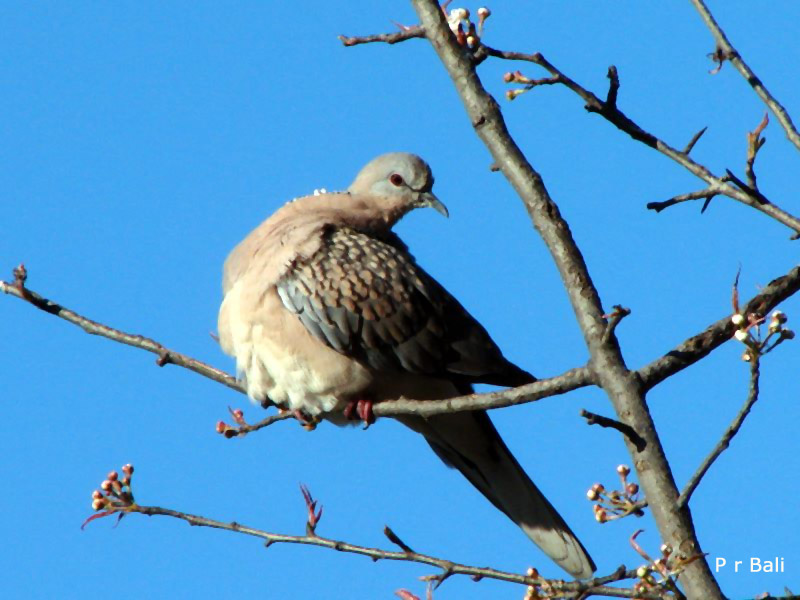|
The Spotted Dove (Streptopelia chinensis), also known as
the Spotted Turtle Dove, is a pigeon which is a resident breeding bird in
tropical southern Asia from India and Sri Lanka east to south China and
Southeast Asia
It is a common and widespread species in open woodland, farmland and
habitation over a good deal of its natural range.
This species builds a stick nest in a tree and lays two white, glossy
eggs. Spotted Dove is a long-tailed, slim pigeon, ranging in length from
28 to 32 centimeters (11.2 to 12.8 inches). Its back, wings and tail are
pale brown, heavily spotted with buff. In flight, it shows blackish flight
feathers bordered on the inner edge with pale grey. Sexes are similar, but
juveniles are duller than adults often lacking the patchy neckband when
very immature.
The head and under parts are pinkish, shading to pale grey on the face and
lower belly. There is a black neck patch finely spotted with white. The
legs are red. The call is a low and gentle coo-coo-croo, with the emphasis
on last note. The call occasionally is "coo-coo krrroo, krook!"
Spotted Doves eat grass seeds, grains and other vegetation. They are
fairly terrestrial, foraging on the ground in grasslands and cultivation.
It breeds all year round with nests commonly found in trees, edge of
buildings or even on the ground.
Like some other doves in this genus, they are not particularly gregarious,
and are usually alone, or in pairs. It is tame but sudden noises flush
them into flight. Flight patterns are similar to the Crested Pigeon. Upon
landing, birds tilt their tail upwards. Males on display obtain a steep
angle and circle down displaying their wings and tail by spreading them
out. |

